TCRNo11 Day 5 // The Masochism of Racing
August 2, 2025
Words by Jake Thorpe
Photos by Matt Grayson, Michael Drummond, Tomás Montes, and Yorit Kluitman
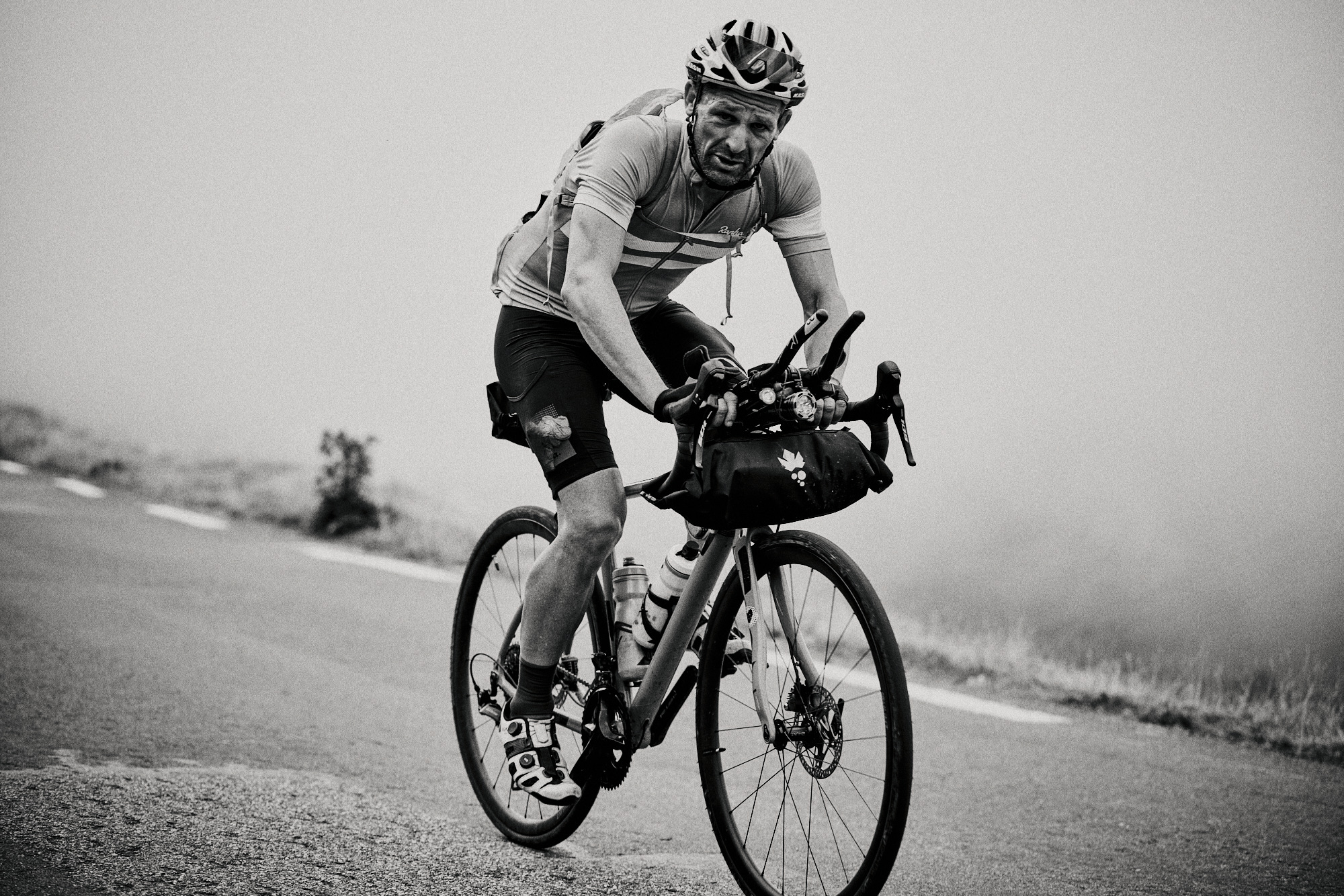
A Meteoric Metamorphosis
The race is hotting up. For riders, during the course of a single descent, temperatures have leapt by more than 10ºC; by no means a heatwave in Southern Europe, but a marked difference from the cool, cloudy days of Northern Spain and the crisp mountain air of the Pyrenees.
Unsurprisingly then, when we caught up with Jana Kesenheimer (001) – still the race’s fastest woman by the end of Day 5, with a 100 km advantage over her chaser, Cynthia Carson (137) – she had her head fully submerged in a fountain. Clearly skilled in the art of divination, she had managed to find one of France’s scarce fountains relatively early on in the day, and directly on route. Gratefully, given our distinct lack of waterproof recording equipment, she soon came up for air. Ever genial, Jana explained that her unwavering nightly routine of 4 hours' sleep had been a valuable strategy so far, helping her retain the capacity to put down the pace of the fastest woman on course.
-6.jpg)
Jana’s route from the second control had allowed her to drop in on an old friend, Mt Ventoux – the final checkpoint in her first self-supported ultra, the Three Peaks Bike Race, back in 2020. This is the race that catapulted her into ultra-cycling stardom. Revisiting the area evoked strong memories for Jana, who recalls stopping beside a certain section of road to wrestle with a particularly thorny puncture. Passing that same section today, now leading the women’s field of the definitive self-supported bike race, the echoes of her earlier self rang out as a resonant reminder of her meteoric rise over the last 5 years – from racing neophyte to seasoned professional.
A (Very Bumpy) Trip Down Memory Lane
CP2 closed at midnight on Friday. The Pyrenean sheep, that scatter the hillsides of the Cirque du Litor like lint, were no doubt relieved by the news – a conclusion to the nightly disturbance of startled riders dividing their slumbrous flock. Just as one control closes, another has leapt into life. Opened by Nicolas Chatelet (046) mid morning, and underwritten by Martin Mortiz (297) half an hour later, CP3 is now welcoming flocks of its own: a steady stream of riders fresh from the Alpine parcours.
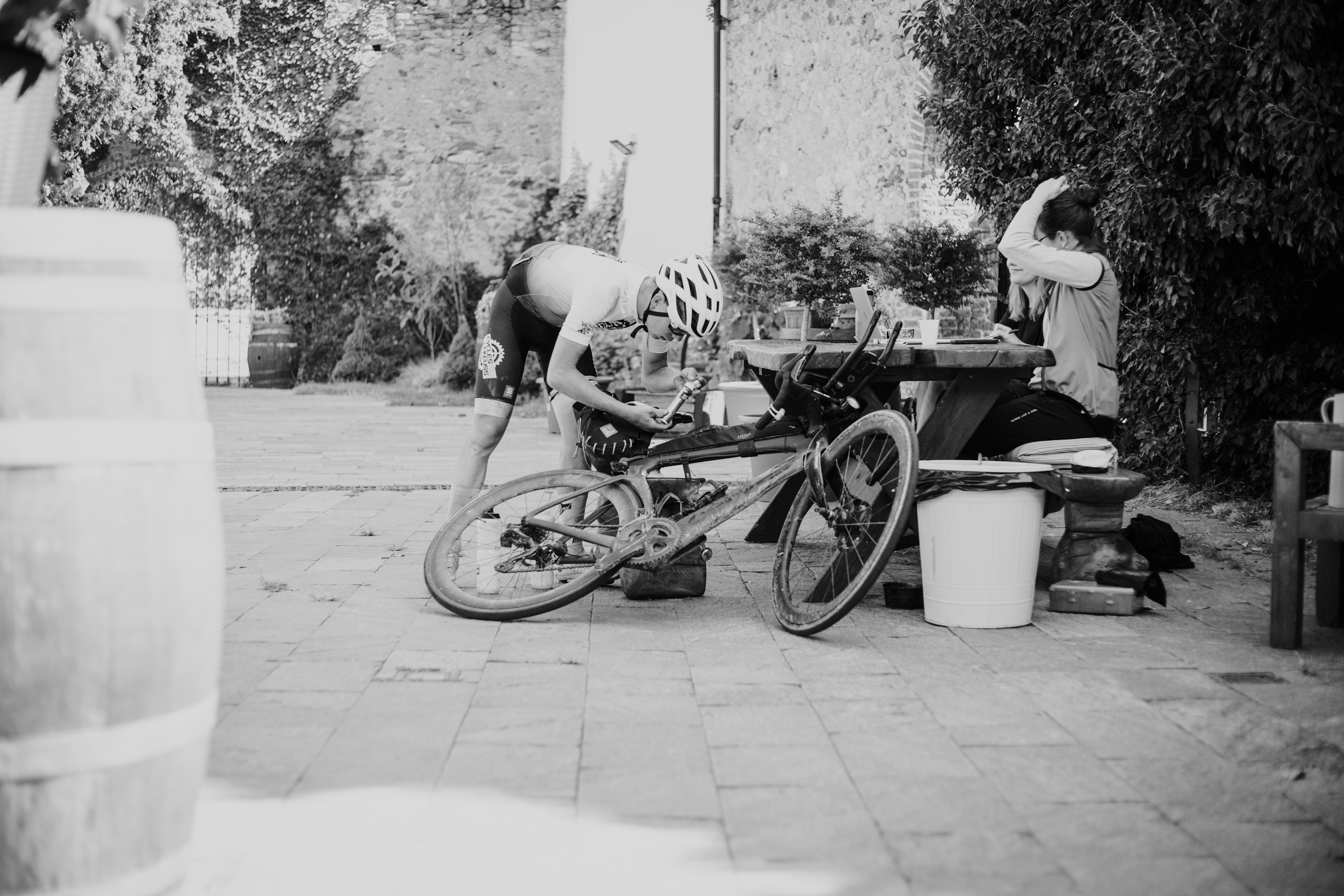
TCRNo11 delves into the pages of its own history books for the third parcours, the col-studded Strada dell’Assietta. The Assietta and its corresponding descent, the Finestre, featured as the second parcours in TCRNo3 – Mike’s first mandated departure from tarmac.
Snaking up pine-paved slopes between the crumbling ridgelines of the Cottian Alps, riders climb on a rough track, its surface an uneven jigsaw of loose gravel and embedded rock. Given the spell of dry weather, a thick film of dust masks the trail’s contours. Higher up, the surface becomes a little più rustico, especially where the road has washed away and slews of rounded boulders have replaced it. Having navigated nearly 40 km of the track’s undulating cols, riders are then spat out onto the descent of the Colle delle Finestre. Inverted, this climb is a historic feature of the Giro d’Italia – a scene of some of the race’s iconic contemporary showdowns – where it has served as the tour’s antepenultimate stage five times. Negotiating the Finestre’s accordionic hairpins – 33 by my count – TCR riders plummet 1700 m to the valley below, arriving in a flash at Susa’s control.
_landscapes-09%20(1).jpg)
Never the Twain Shall Meet
Those attacking the parcours by daylight are, however, rewarded for their efforts. Control Team 1, laying chase to the chasers were treated to a transcendental panorama – a crackle of peaks wallowing luxuriantly in a cocoon of cotton cloud. I feel truly sorry for those arriving after dark. But night won’t be the only thing to rob riders of their reward. Conditions on the Assietta are fickle. Without warning, indefatigable walls of mist march solemnly forward, engulfing the pass and eviscerating the view.
However, as the Race Director – himself an experienced racer – reflects, “I always take a sort of viscous pleasure in riding the most beautiful sections by night. It reinforces the masochism of the race.” For Andrew, this tension forces reflection – a focus on the race’s why – and, ultimately, produces a clear distinction. There’s touring and there’s racing, and never the twain shall meet.
_landscapes-10.jpg)
The Northernmost Node
For the majority of leading riders, their route towards the Assietta threaded the needle of a stretch of banned road between Embrun and Briançon – a fast, busy dual carriageway with limited hardshoulder. Between the two towns, a short section of the thoroughfare was permitted by the race to allow riders to cross the Durance river and reach the quieter roads on its northern banks.
Justinas Leveika (023), perhaps unaware of this little snicket, was seen taking a protracted diversion – a route that took him almost two latitudinal degrees further north than those tracing the river’s curves. There’s a distinct possibility that, with his unique deviation, Justinas may well have just delineated the race's northernmost boundary. The third of his three goals – avoid disqualification – remains safe for now; but goal two – to finish – could soon be in jeopardy should the Lithuanian opt for too many more wayward digressions. At present, Justinas’ routing choice appears to have cost him nearly 8 hours, dropping him back to 6th at the third control – a position that now places him squarely within the chasing pack.
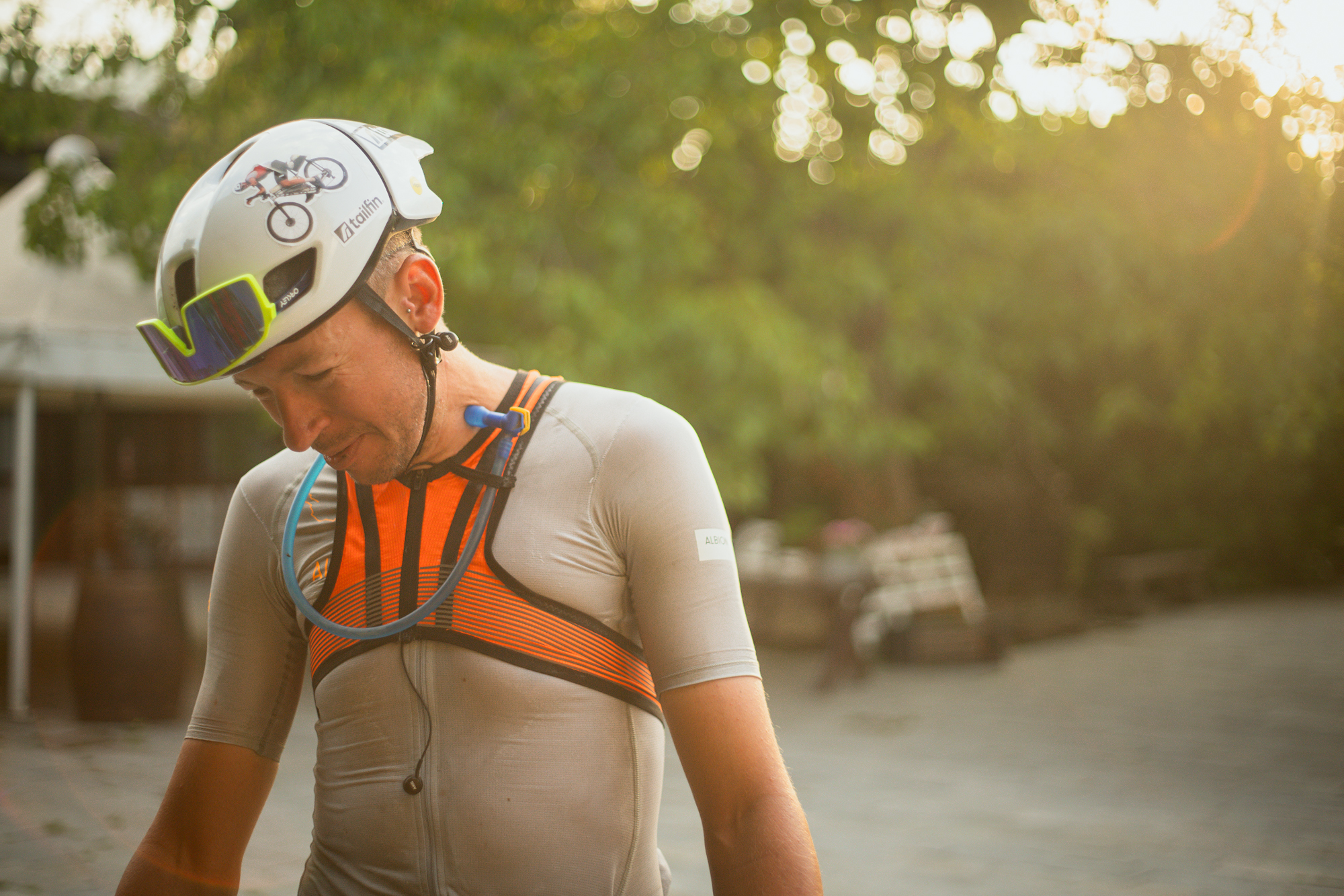
As we spoke at the top of the Assietta, the King of Chaos fiddled with a broken zip, biting the slider into submission. He sounded tired; less exuberant, perhaps, than earlier in the race. But his sense of humour persisted – wit still worming its way to the surface. Catching him a little later, setting off into the evening from Susa’s control, he looked a little brighter – a steaming bowl of Italian pasta, submerged in the shavings of a full wedge of parmigiano, had clearly had a restorative effect. His race is far from over.
Whatever their setbacks, it’s crunch time for the chasers. As the pivotal divide of the Adriatic looms larger, it’s more crucial than ever that they keep their foot on the gas, proceeding in hot pursuit of the leaders who, by now, will be feeling the effects of the sharp end coming into full focus. At this point, now halfway into the race, a single blunder from the frontrunners – a bad mechanical, a reckless routing decision, or a missed ferry – could see the standings dramatically altered.
High Octane Pocket Rocket
At the front, however, the leading quartet appear to be shouldering the pressure well. For some, sleep may well be the determining factor. One rider who’s made an unremitting commitment to prioritise his forty winks is Victor Bosoni (232) – fourth to the third control, an hour behind Austrian metronome, Christoph Strasser (002).
It seems our Boy Wonder is in need of a new nickname. Pocket Rocket. Anyone keeping an eye on the rider stats will see exactly how Victor Bosoni (232) is holding ground so convincingly in the leading pack, despite his stoppage topping 6 hours per night. With the majority of the field holding an average moving speed of around 23 km/h, Victor is squeezing every drop of juice from the fruit of his youthful zest. And it’s showing; the 23-year-old currently boasts an average moving speed of more than 27 km/h.
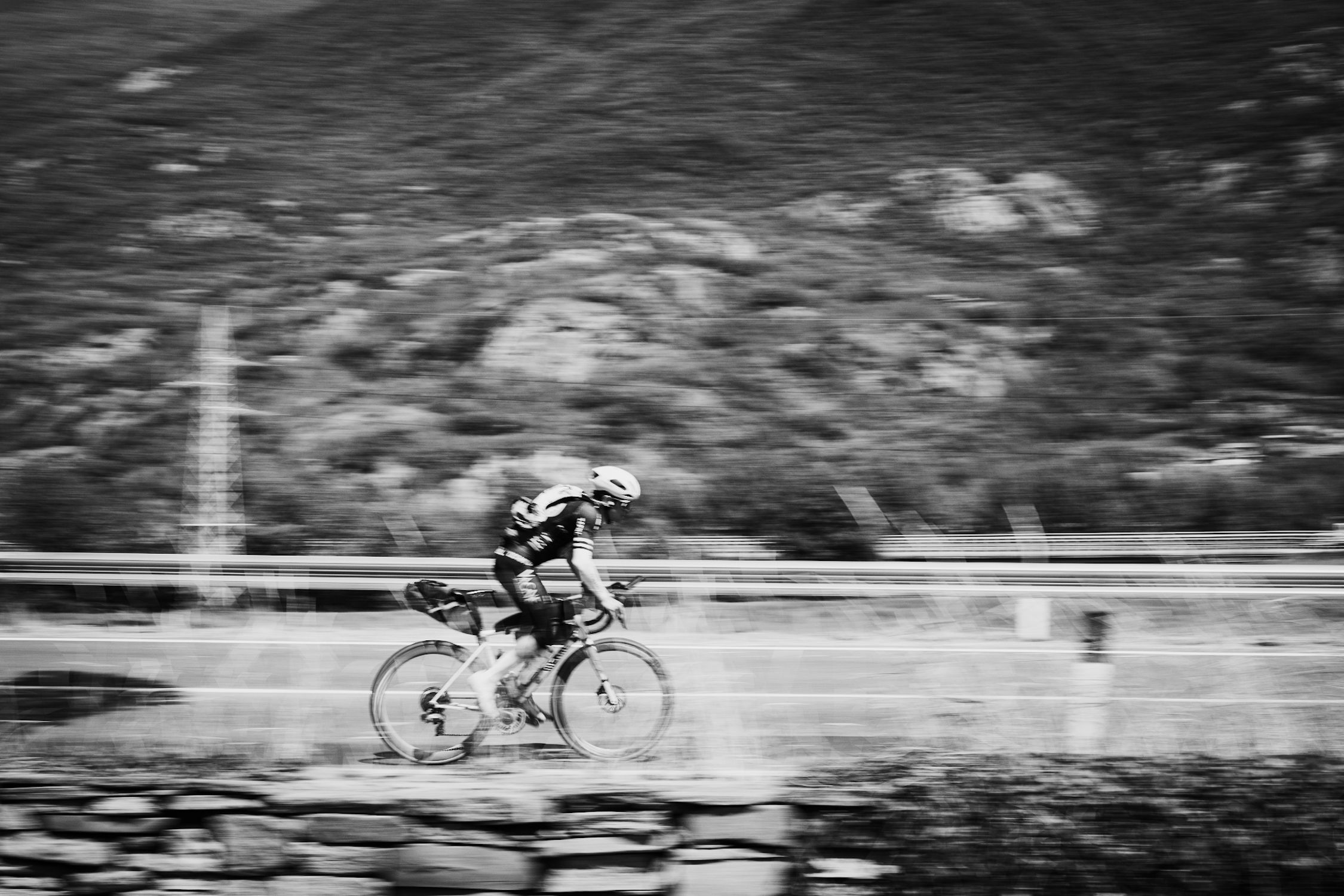
It’s not just the race’s young guns putting speed at the top of their agenda. Martin Moritz (297), despite having more than a decade on the Pocket Rocket, is still managing to maintain a moving average of 25.5 km/h. But, as we all know, the TCR isn’t a race won on exuberance alone. High octane strategies rarely pass muster after 10 days of racing. Sometimes, being a diesel is the best bet.
Life in 12 Days
Swiss rider Jocelyn Roth – a veteran of two TPRs who narrowly missed out on the podium last year – has been one of the few riders, like Christoph, to charge on less volatile fuel. In his own words, his race so far has been “the opposite of everyone else’s.”
Despite his credentials, however, Jocelyn's watch doesn't keep the faultless time reputed by those of his horologist countrymen. Running sometimes fast, and at others slow, it seems their only real overlap is a love of mechanical complications. Plagued with early navigational issues, he struggled, for a while, to settle into the rhythm of his first TCR. Punctures have since abounded, and chain issues have forced him to tour the bike shops of Southern France. These mechanicals have seen him lose time against his tightly wound schedule. Catching up with the Swiss rider at the capstone of the Strada dell’Assietta – this year’s Cima Coppi of the TCR’s mandatory riding – he shared the story of the day’s latest obstacle, a wallet and gilet left in a café 60 km behind him.
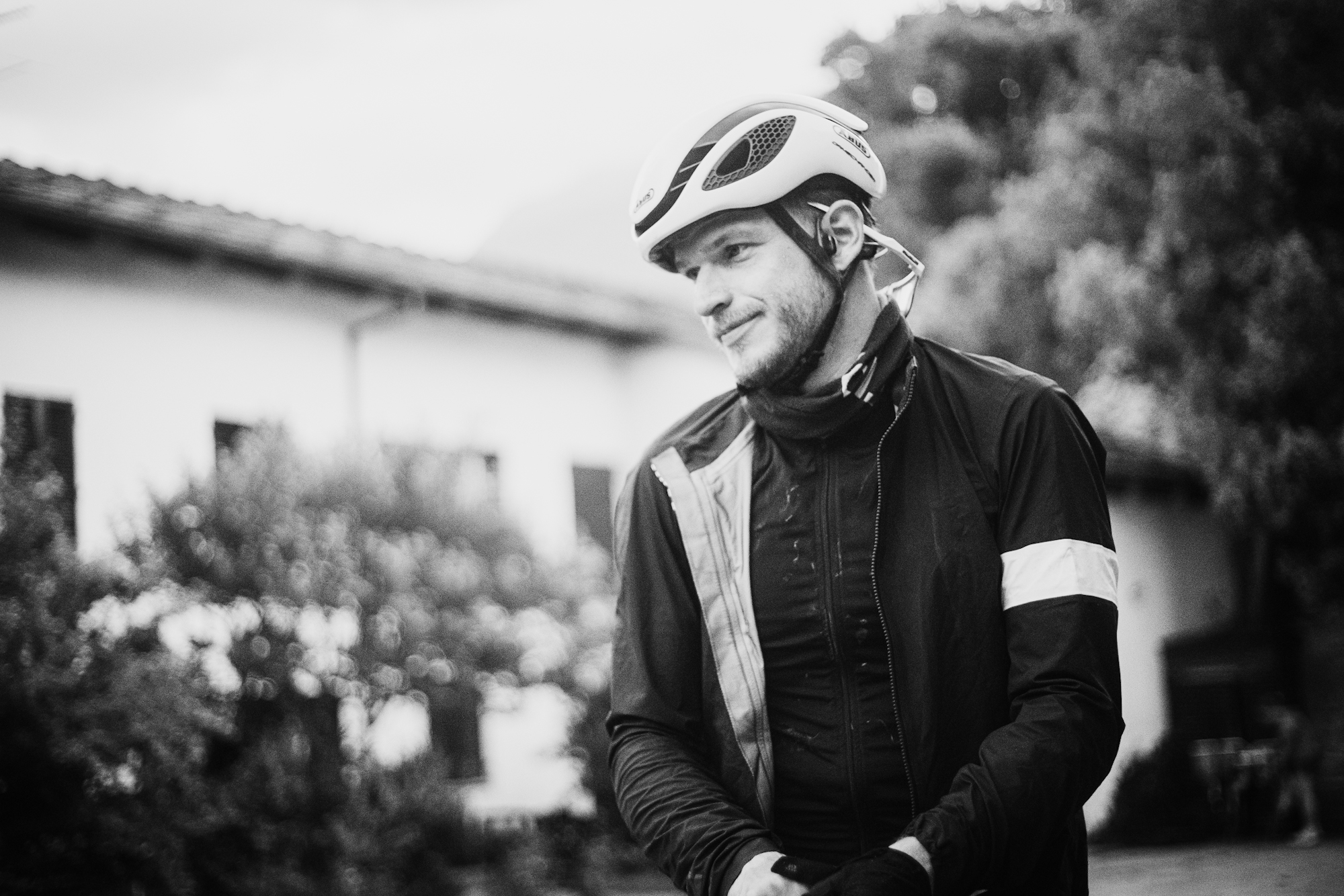
Jocelyn, like many at this stage of the race, has his sights set on the Adriatic. Aiming for a ferry on Monday evening, and with close to 1300 km still to cover, he’s cutting a fine margin. “Every morning I wake thinking it’s possible”, he says of his deadline, “then every evening I go to sleep thinking it’s not.” With the ferry scarcely hanging in the balance, there’s not a minute to spare for the retracing of steps – certainly not 60 km of them. Still thinking clearly enough to mitigate his loss – a tall order after 5 days of racing – Jocelyn phoned the café and, 45 minutes later, his gilet had been sent back to Switzerland and the €140 in cash recovered by digital transfer.
Reflecting on the troubles of his race so far, he took a moment to explain why he chooses to put himself through it at all. “It’s very philosophical”, he says of the trials, “it’s like a summary of life in 12 days”. For Jocelyn, racing presents the opportunity to push his mind and body to such extremes that they generate a commensurate emotional response. The acute highs and lows that arise are addictive. It seems that, like Andrew, for Jocelyn too, racing produces a peerless headspace – one not readily found in such a condensed form.
Scratch Report
Jesse Ahola (317) – Rider scratched 16:50 CEST 1/8 via WhatsApp due to illness.
Philipp Juergens (036) – Rider scratched 16:50 CEST 1/8 via WhatsApp due to illness.
Manuel Feldbaumer (234) – Rider scratched 16:35 CEST 1/8 via WhatsApp - no reason given.
Erin Pederick (066) – Rider scratched 16:00 CEST 1/8 via WhatsApp due to saddle sores.
Johan Lowette (103) – Rider scratched 16:03 CEST 1/8 via email due to illness.
James Giblett (096) – Rider scratched 14:38 CEST 1/8 via WhatsApp due to fatigue.
Harri Antoninis (229) – Rider scratched 16:00 CEST 1/8 via phone call due to achilles injury.
Ciaran Codling (201) – Rider scratched 12:38 CEST 1/8 via WhatsApp due to saddle sores.
Lucas Strittmatter (008) – Rider scratched 13:58 CEST 1/8 via WhatsApp due to fatigue related injury.
Jacob Bysted (202) – Rider scratched 13:57 CEST 1/8 via email due to injuries resulting from a crash.
Samuel Zehelein (246) – Rider scratched 10:29 CEST 1/8 via email - no reason given.
Adrian Bailey (184) – Rider scratched 11:27 CEST 1/8 via WhatsApp due to knee pain.
Pascal Schmitterer (064) – Rider scratched 11:10 CEST 1/8 via WhatsApp due to knee injury.
Cindy Hertach (387a) – Rider scratched 8:33 CEST 1/8 via email due to illness.
Nikolas Jonek (225) – Rider scratched 8:20 CEST 1/8 via email due to fatigue.
Salvador Palomo (393b) – Rider scratched 22:40 CEST 31/7 via sms due to injury.
Juan Pedro Moreno (393a) – Rider scratched 22:40 CEST 31/7 via sms due to injury.
Rod Aitchison (269) – Rider scratched 22:19 CEST 31/7 via email due to saddle sores.
Vincas Sidaras (308) – Rider scratched 20:57 CEST 31/7 via WhatsApp due to illness.
Alexander Spoelstra (307) – Rider scratched 15:13 CEST 31/7 via WhatsApp due to saddle sores.
Michal Tokarz (339) – Rider scratched 14:44 CEST 31/7 via WhatsApp due to injury.
Moa Henriet (261) – Rider scratched 14:15 CEST 31/7 via WhatsApp due to injury.
